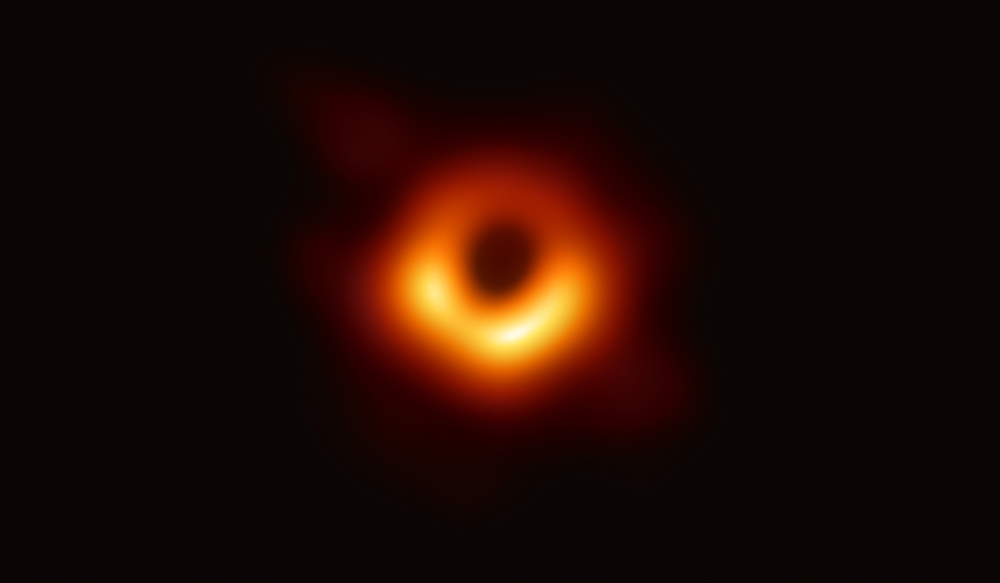In a breakthrough for astronomy and physics, the Event Horizon Telescope (EHT) has obtained a direct image of a black hole. The first black hole captured in this manner is a supermassive one at the heart of a nearby galaxy, Messier 87. Further study of the imaged black hole should help scientists answer a host of astrophysical questions about black holes, as well as offer powerful and novel tests of Albert Einstein's general theory of relativity, the modern framework for gravity. See also: Astronomy; Black hole; Galaxy; Gravity; Physics; Relativity

An original prediction of general relativity, which celebrated its 100th birthday in 1915, black holes are among the most extreme objects in the universe. Formed from the collapse of massive stars' cores and other vast collections of matter, black holes pack staggering amounts of mass into small volumes. Such a concentration of mass generates gravity strong enough to create an event horizon—a boundary in space from within which even light cannot escape, thus giving black holes their name. See also: Light; Mass; Matter (physics); Spacetime; Star
The image obtained by the EHT bolsters this scientific consensus about the nature of black holes. The representation conveys a dark circle surrounded by a bright disk. The circle—predicted by theorists in justifying development of the EHT—is actually a shadow cast by the black hole against the luminous, ring-like structure of cosmic gas and dust spiraling around and into the hole. The black hole itself, which is perfectly dark and thus cannot be seen, is estimated to be about 2.5 times smaller than its shadow and measures about 40 billion km (25 billion mi) in diameter. Comparing observations of the wrapping of material around the black hole to theoretical models allowed for a high-accuracy mass calculation of Messier 87's black hole, weighing it in at 6.5 billion times the mass of the Sun. Scientists’ newfound ability to examine the black hole with this amount of precision, thanks to the EHT, will advance our understanding of these objects and their underlying physics. See also: Shadow; Sun; Theoretical physics
The EHT is not a single observatory but instead a globe-spanning collaboration of eight radio astronomy observatories. These include the Atacama Large Millimeter/submillimeter Array (ALMA) in Chile, the James Clerk Maxwell Telescope in Hawaii, and the South Pole Telescope in Antarctica. Observations from each one are combined via a technique called very-long-baseline interferometry (VLBI), effectively operating as a telescope the size of the Earth in the 1.3-millimeter wavelength portion of the electromagnetic spectrum. See also: Electromagnetism; Interferometry; Photon
In recent years, EHT has observed both Messier 87 and the black hole at the center of our Milky Way Galaxy. The latter, designated Sagittarius A*, is actually much closer to Earth—located only 25,000 light years away, versus 55 million light-years for Messier 87. However, because the Milky Way's enormous black hole is much less massive than that, weighing in at only around four million times the mass of the Sun, Messier 87's black hole ultimately turned out to be easier to initially image. With additional observations and new observatories joining the collaboration, EHT scientists hope to debut an image of the Milky Way's resident supermassive black hole in the near future. See also: Earth; Light-year; Milky Way Galaxy





